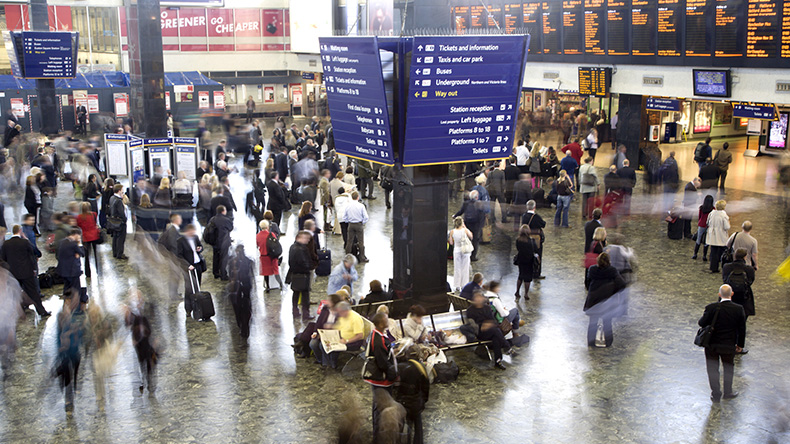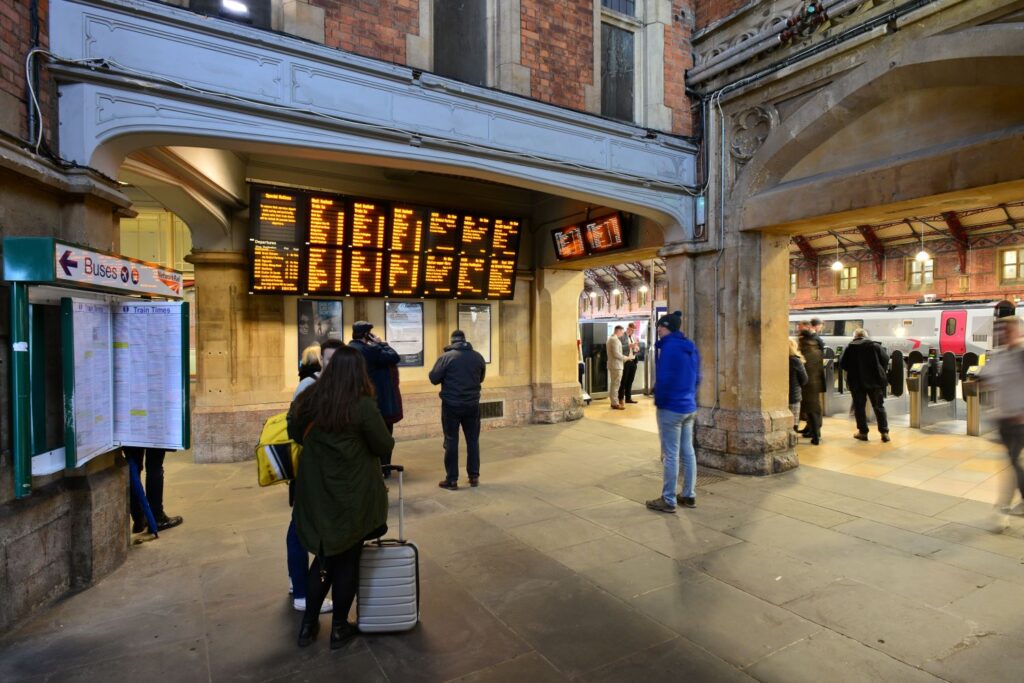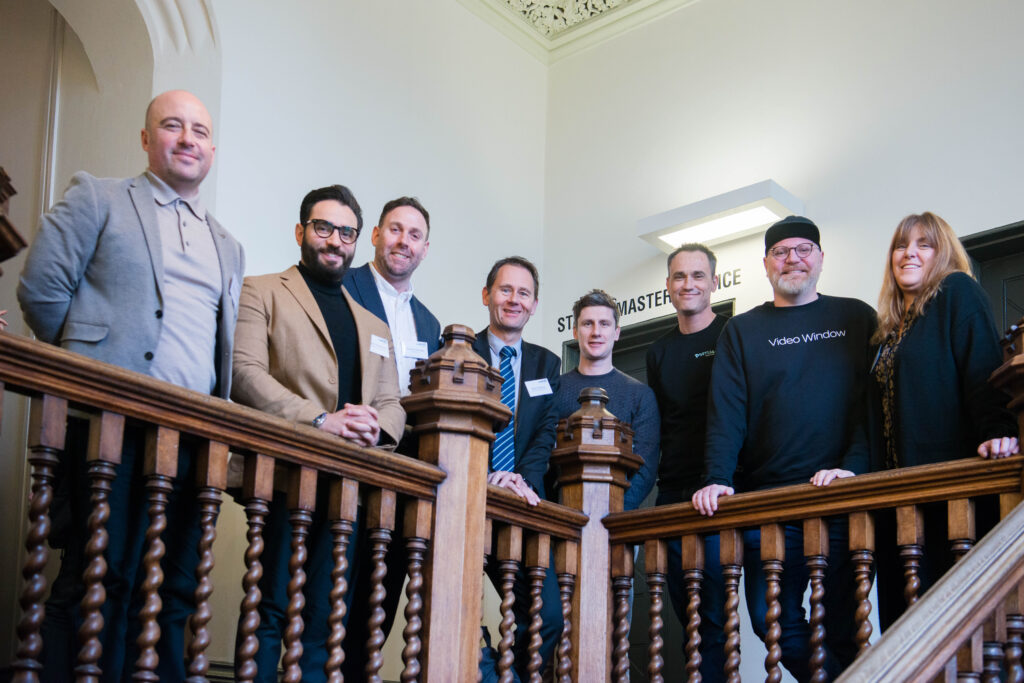That’s why we’ve been working with mobile network data specialists Citi Logik and data visualisation experts Buzz Radar, to create a prototype railway real-time data visualisation by indicating train occupancy levels in real time to both passengers and train service operators.
Using data to manage rail capacity
So it’s surprising that there’s no current method for capturing railway real-time data and accurately calculating the number of people using either an individual train or the network as a whole.

The fact that UK train services are provided by more than 20 different train operating companies (TOCs) complicates the picture, with each TOC relying on different methods to gather rough estimates of their trains’ occupancy levels.
Challenge
Passengers arriving at UK train stations typically have no way of knowing how crowded the next train will be. A lack of available seats may be just an annoyance for some travellers, particularly those making short journeys, but for others (including those with impaired mobility or anxiety in crowded spaces) it could lead to them not getting on the train at all. The productivity of business travellers will also suffer if a lack of seating prevents them from working on the train. So we need new railway solutions to tackle this problem.
At an network-wide level, the lack of real-time information on passenger numbers can lead to major inefficiencies, not just in terms of overcrowded trains but also in terms of services that are underused. Excessive passenger numbers on individual trains can also create or exacerbate delays, with some estimates suggesting that between 40-60% of train delays are directly caused by the boarding and alighting procedure.
Currently, the train industry relies on a mixture of historical passenger data (often gathered manually by staff using clickers to count passengers getting on and off trains on sample days), passenger surveys or predictions based on seat reservations – none of which have proven to be particularly accurate. Systems based on cameras or other sensors which could be used to count people on and off trains have been suggested, but these would be expensive as they would need to be installed at platforms up and down the country. Historical models are, meanwhile, understandably poor at anticipating increases in occupancy levels as a result of disruptions to the regular service. In addition, individual TOCs are usually reluctant to share any information that they have gathered in relation to passenger numbers, as they do not want this to be used by their commercial rivals.
The challenge for the RailWatch consortium therefore was to demonstrate a low-cost system that could monitor train occupancy levels in real time, without the need for retro-fitting new sensors onto existing trains. The system would need to be fully independent from the train operating companies, in order to be free of commercial influence, and applicable across the whole railway network. It would also have to include information about the status of each train and be able to combine this information in a manner that was instantly available to travellers in an easy-to-understand format.
Solution
The RailWatch consortium’s proposed solution was to create a visulisation that would use mobile phone network data to calculate the number of passengers travelling on individual trains. Since mapping the entire UK network would be too costly for the purpose of merely demonstrating the technology, RailWatch focused on a 280-mile section of the West Coast Main Line between Watford Junction and Carlisle.
The visualisation relied on the expertise of all three consortium partners with Leeds-based technology company Citi Logik drawing on anonymised mobile phone data supplied by Vodafone (scaled up in proportion to Vodafone’s share of the overall UK mobile phone network) in order to calculate the number of passengers on board each train. The Transport Systems Catapult used its own rail sector expertise to help match these passenger numbers against each train’s real time status using available industry data feeds, while Buzz Radar used its experience in making user-friendly data visualisations in order to create a visualisation that could be used by members of the public during the project’s demonstration period.
Tracsis, a traffic and data services company that was spun off from the University of Leeds in 2004, were meanwhile taken on as sub-contractors to verify the accuracy of the tool – using manual counts at stations along the route to check that the tool’s figures matched the reality on the ground.
Results
After development and testing of the system, the RailWatch visulisation went live in March 2018. Users were able to access real-time information for trains running between Watford Junction and Carlisle on the West Coast Main Line route, with the visualisation showing the live location and up-to-date arrival times for the next 5 trains, along with colour-coded passenger occupancy levels (green for “likely seating”, amber for “limited seating” and red for “likely standing”).
Comparisons with the manual counts carried out at key stations along the line showed a high degree of accuracy in the system and were able to help add calibration where required. The technology behind the visulisation was also able to successfully distinguish the phone signals of train users from other signals in the immediate area – proving that the system can tell the difference between train passengers and car users even when a train line is running parallel to a busy motorway. During the period of the demonstration, the software was clearly able to indicate periods of unusually high (and unusually low) occupancy levels, and also show in a highly visual manner the knock-on effect of delayed and cancelled trains.
Once the demonstration period was over, a “snapshot” of the visulisation taken during 24 hours at Crewe station was kept on an online loop that can be used by anyone interested in seeing what the system looks like.
Next steps
Citi Logik have already enjoyed commercial success as a result of the project, with public transport companies working with the RailWatch team to produce studies on their customers’ journeys. In addition, Citi Logik have started work on a number of other products, as well as engaging with a number of train operating companies at a commercial level.
Further information
To find out more about the work of our RailWatch consortium partners, please head to the Citi Logik and Buzz Radar websites.
Status of project: Completed 12-month (Oct 2017 to Oct 2018) project
Funding: Innovate UK funding competition (accelerating innovation in rail round 4)














